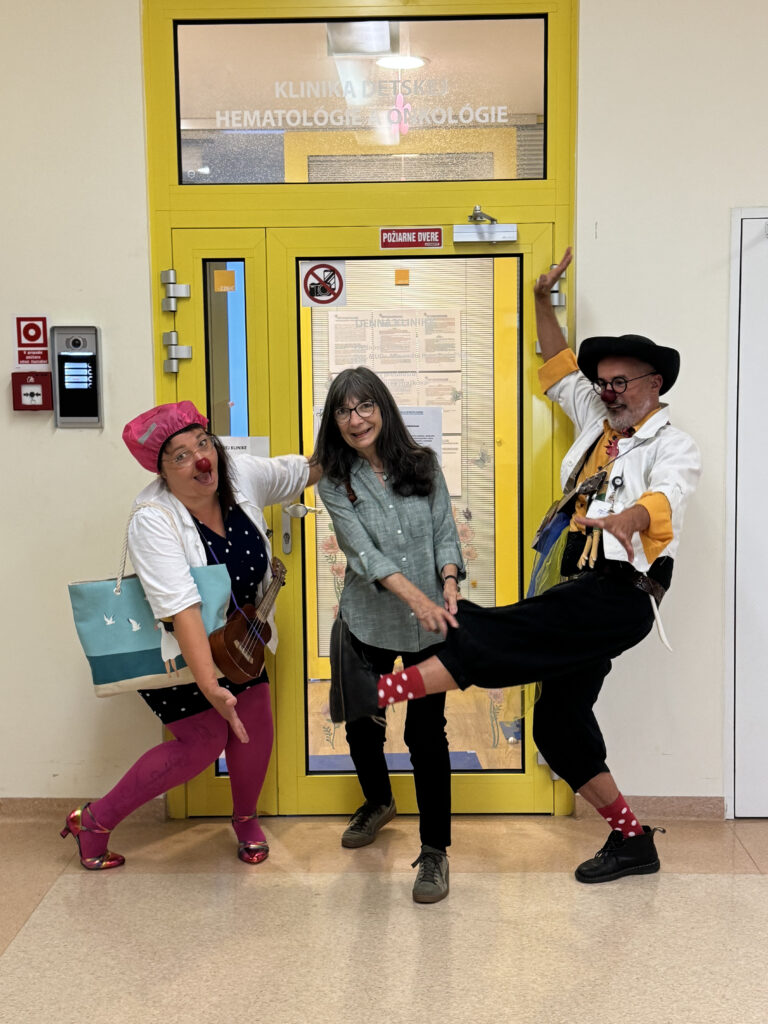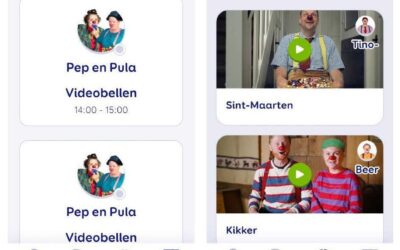🎭🌟 Laura Fernandez: We All Have a Clown Inside Us. But Not Everyone Wants to Discover It

Due to her extensive healthcare clown experience and the outstanding quality of her work, our Ambassador Laura Fernandez is an auditor for efhco. She was interviewed while visiting Červený Nos in Slovakia conducting the mandatory Quality Label Audit due to their application for full membership. The General Assembly in October 2025 approved this motion.
When and how did you become a hospital clown?
My first experience with hospital clowning was in 1987. One day, a pantomime student called me and said that Big Apple Circus Clown Care Unit in New York was holding auditions, and that I should go. At first, I refused — I didn’t like hospitals and couldn’t imagine what a clown would be doing there. In the end, I decided at least to take a look. When I saw Michael Christensen clowning — what his humor was able to do for parents waiting in despair in the ICU hallway — I immediately knew I wanted to go to the audition.
What fascinated you so much about that clowning?
Michael did something very simple — he was writing something, then crumpled up the paper and threw it away. He did this three times until the parents finally looked at him. Then he said: “Sorry, just catching up on paperwork.” They started laughing. At that moment, I realized what a gift a clown can be for a hospital, and that experience still inspires me today.
What was the hardest part at the beginning of your career as a hospital clown?
The biggest challenge was allowing myself to be who I was. As a woman and a Latina, I wasn’t raised to be funny. At the Festival of Fools in Amsterdam, I saw a performance by two female mimes. Watching them, I thought: if they can do this on stage, then so can I.
What is your clown persona like?
My clown has gone through many changes—depending on where I was working at the time. But her essence has remained the same. She is very curious and naïve, but at the same time deeply empathetic. Sometimes she wants to be sillier, but in crucial moments she turns out wiser than she herself would like.
Is there something you’ve learned from your clown character?
Yes, most of all, how to be angry. It sounds funny, but as a child I was taught to be polite and not to show anger. My clown taught me how to be angry—but with love. And when I saw that people laughed at it, I realized I could express and release anger in many different ways.
….
How is performing in a hospital different from performing on stage?
In a hospital, the audience is often just one person—a child, sometimes with a parent or sibling. It’s very intimate. Unlike in a dark theatre, here I look directly into their eyes and know immediately whether what I’m doing works or not.
How has hospital clowning developed since its beginnings?
Today there are systems, structures, and training for everything. When I started, I only had theatre experience and three months of a pilot project with Michael Christensen. The rest we had to invent. Now organizations support clowns, teams, and hospitals—and that gives this work a future. I believe I’ve contributed my part to that.
Right now, there is a recruitment of new clowns in Slovakia. What qualities should an applicant have to become a hospital clown?
They should have theatre or performance experience. They should be empathetic and able to immerse themselves in their clown persona. It also helps if they have a healthy relationship with life and death and enjoy working in a team. Solo players don’t go far in clowning.
Do you think every person has a clown inside?
Yes, everyone does. But not everyone discovers it—or wants to. Unfortunately, I’ve also met people without humor, and they didn’t seem happy. On the other hand, those who allow their clown to enter their lives, I believe, become more complete as people.
Does humor and clowning differ from country to country?
Absolutely. Clowns in Italy are different from those in Germany or New York. Each country has its own temperament, rhythm, and idea of what’s funny. What is the same everywhere, though, are children. For the first thirty years, I worked mostly with them, and I never found a difference between countries. The way children react to funny things is universal. The difference lies more in clowns, staff, or organization. For example, in Germany people watch their personal space.
All artists are taking home learnings while participating in efhco. events and trainings.
Do you have a memory that really resonated with you and stayed with you?
Yes. A very surprising and moving moment for me was with two children—oncologic patients. They were fighting their illness and sensed something was up—just as children, with their intuition, often do. When my clown partner and I visited them, they asked if they could borrow our puppets that we had brought for clowning. Then they completely ignored us—and even ignored each other. Instead, they began talking through the puppets. They had the most intimate conversation about death—whether dying hurts, what heaven is like, whether there are books there… Then the puppets said goodbye, took a bow, and the children returned them to us saying: “Thank you very much.”
© Interview + Photo: Cerveny Nos, Slovakia





